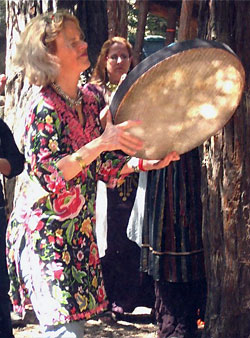Classical Persian Music
While the mysticism of Persian classical music is rooted in the poetry, the foundational theory and repertory of the music itself is known as the Radif, a complex system which was organized and codified in the second half of the 19th century, collected from much older musical repertory throughout Iran by two brothers, Mirza Abdollah and Mirza Hossein Gholi. Along with Western classical music, Persian music draws from many sources including music and songs associated with specific occupations.
The Radif is composed of approximately 400 brief, mostly non-metrical melodic phrases known as gusheh (a word meaning 'corner'), each with a name and an average duration of one or two minutes. These gushehs are classified into 12 modal affinities, and together as the integrated whole of the Radif, share some characteristics with the modal art music of India, Turkey and the Arab world. Since music in these areas has a direct relationship with ancient musical practices whose intervals are more closely related to the proportions of the natural harmonic series, none of these related families of music can be played accurately with the tempered scale of the piano.
The establishment of the 12-equal-step tempered scale in 18th century Europe was a brilliant innovation which introduced many significant benefits, including a standard for tuning which made it possible for musicians and orchestras from different areas to play together, as well as the creation of various forms of harmony. Singers with varying vocal ranges could be accommodated, as pitches in the tempered scale can be easily transposed. Along with such conveniences, however, it is notable that a great deal of the essential, archetypal geometry consistent with patterns of growth in nature, and which to a large degree is still present in Eastern music, has been lost in most of Western music.
In contrast to the Western approach to art which typically promotes the expression of the 'self' of the artist, within Persian and Eastern cultures generally, the artist strives to become a vessel through which the elements of the ancient art form are manifested. Within these parameters, individual expression emerges.
The ancient manner of music education in Iran involves a one-to-one apprenticeship and transmission between Master and student. While the first music lesson for most instruments in Western culture usually involves learning to read music, the emphasis in Persian music - and in Persian culture generally - is memorization. The Master plays a phrase, or gusheh, and the student attempts to internalize and duplicate it until it is mastered. While in recent years the music education system in Iran has become increasingly dependent on written music, the goal remains to commit the repertory of the Radif to memory.
Memorization promotes a deeply personal attitude and performance of music. While musicians in the Western symphony orchestra rely on exterior music notation during performances, Persian musicians rely on their own integration of the substance of the music.
The first major accomplishment in attaining mastery of classical Persian music is the memorization of the entire Radif, which depending on the mood of the musician, could occupy between five and six hours to play in its entirety. Over the many years required to memorize the exact melodies and cadence of each gusheh, emotions begin to emerge in personal interpretation and improvisation, within the parameters of the Radif.
The practice of internalizing poetry as well as the Radif bestows the Persian musician with a profound, impersonal resource from which to draw for personal expression. Traditionally, the Master of classical Persian music does not know in advance what he or she will perform in a concert. In a flash of inspiration, a poem comes to mind and heart, and related elements of the Radif emerge. At the heart of the music is the mysticism of the poetry, which drives the improvisation in response to the circumstances of the moment, including the emotion and idea of the performer, mood of the audience, the weather, time of day, etc.
The most authoritative version of the Vocal Radif is that of the late Mahmud Karimi, who chose to set excerpts from classical Persian poetry to the gushehs for various reasons, including their philosophical and rhythmic content. In addition, the memorization of the lines of poetry is understood as a tool for anchoring the melodic content of the Radif in the psyche.

